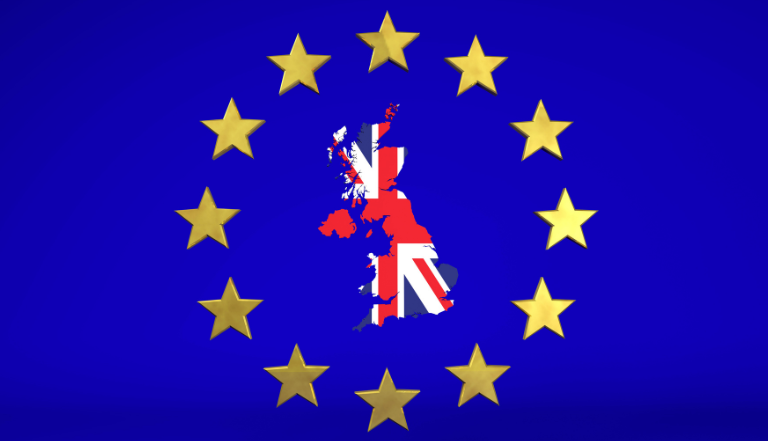The Retained EU Law (Revocation and Reform) Act 2023 came into force in the United Kingdom on 1 January 2024. This piece of legislation is likely to have important implications for owners of intellectual property rights in the UK, in that UK law relating to trade marks, copyright, design rights and SPCs (Supplementary Protection Certificates) may well start to diverge from EU law moving forward.
The Act makes a number of important changes to UK law, not least by removing the principle of supremacy of EU law in the UK and providing that the general principles of EU law no longer apply in the UK. Consequently, the UK courts are no longer obliged to interpret national law so as to give effect to EU law. Furthermore, the UK Supreme Court and the Court of Appeal are no longer bound by earlier decisions of the European Union courts, and are free to diverge from such earlier decisions if they consider it appropriate to do so.
We have already seen this start to happen, with the Court of Appeal having recently decided to diverge from previous caselaw of the EU when considering the law relating to the defence of acquiescence in trade mark infringement proceedings. In the case of Industrial Cleaning Equipment (Southampton) Ltd v Intelligent Cleaning Equipment Holdings Co Ltd, decided in late 2023, the Court of Appeal declined to follow the leading EU decision relating to acquiescence, and instead laid down a different test for the application of this defence. Further information about this case can be found here. This clearly shows that the UK courts are now willing to consider whether it is appropriate to continue to apply previous EU decisions in the UK, or whether UK law should start to take a different direction.
Whilst the Act does only allow the Supreme Court and the Court of Appeal to depart from previous EU decisions, such that the lower courts in the UK (including the High Court and IPEC) are still obliged to follow such earlier precedents, the Act does introduce a new mechanism whereby such lower courts, and even tribunals, can question whether an earlier EU decision should be departed from. In this regard, the Act provides for such lower courts and tribunals to make a reference to the Court of Appeal or the Supreme Court, seeking guidance from the higher court as to whether one or more points of law arising from earlier EU decisions should continue to be followed or not. The higher court may then issue an order that the EU decision is incompatible with UK law, such that the lower court or tribunal is no longer bound by the EU decision.
This mechanism effectively provides a means, and perhaps even encouragement, for all courts and tribunals in the UK to question whether EU case law remains relevant to UK law, and to allow UK law to depart from EU law if appropriate.
Importantly, the Act provides that the lower courts and tribunals may make a reference of their own accord, but also at the request of a party to the proceedings concerned. Accordingly, in the course of IP proceedings before the UK courts or even the UKIPO, we may well start to see parties seeking a reference to the higher courts for guidance as to whether previous EU case law should continue to apply, and this may become a strategy employed by parties to improve their case in such proceedings.
The ability of the courts (and parties before the courts) to question the continued relevance of EU case law is likely to result in UK law moving away from what has become established law for many years. Of particular interest is whether the UK courts will follow the European Court’s decision in Cofemel, which opens up copyright protection to a potentially limitless range of works, or whether the UK courts will revert to the traditional “closed” list of works in which copyright may subsist, as set out in the Copyright, Designs & Patents Act 1988.
It will also be interesting to see if the Act accelerates the divergence of UK and EU IP examination practice that we have seen developing over recent years. For instance, the UKIPO’s examination rules for trade mark and design applications currently differ from those of the EUIPO, particularly in relation to absolute grounds refusals for trade mark applications, and in relation to the registrability of animated graphical user interfaces as registered designs. The ability of the UKIPO, as a tribunal, to refer a matter of EU case law to a higher court for guidance as to whether that case law remains relevant and applicable in the UK, may result in such examination rules to diverge even further than they have to date.
From a practical perspective, these changes to UK law mean that different strategies may need to be adopted by UK IP rights owners in securing and enforcing their IP rights. Different examination rules may result in it becoming necessary to adopt a different filing strategy when seeking protection in both the UK and EU. Equally, when enforcing IP rights against an infringer in multiple jurisdictions, different tactics may be required to take account of the potential differences that may develop between UK and EU law, not least in relation to the scope of protection granted by the IP rights concerned and the defences available.
It is therefore important to ensure that both a UK and EU perspective is taken in relation to the management of IP rights in the UK and Europe. As a firm with offices in both the UK and EU, and with both UK and EU attorneys, Marks & Clerk are ideally placed to advise further on how best to secure, manage and enforce IP rights in light of the likely divergence of UK law from established EU law. For further information about this and the implications of the 2023 Act, please do not hesitate to contact us.



